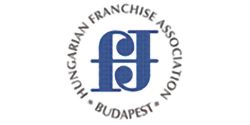New Highlights from the 2012 AFDR
In the previous two issues of FUSR, we published (1) a high-level overview of the 2012 Annual Franchise Development Report (AFDR), followed by (2) a selection of highlights from the report. In this third article, we provide more findings from the report, which drew on detailed responses from 110 franchisors representing 109,936 total units (79,254 franchised and 30,682 company-owned).
- Social media deals in 2011. The trend here is the gradual growth of social media as a sales source. Although the totals are still small, they are steadily rising. Facebook led the way with 11 deals, followed by LinkedIn (9 deals), YouTube (8 deals), craigslist (6 deals), and blogging (3 deals). Facebook showed a dramatic upswing, climbing from no sales in the previous two years to lead the category in 2011, says Steve Olson, president of Franchise Update Media Group. Interestingly, he notes, “Craigslist has produced sales every year since we started monitoring it. You don’t have to optimize it, just post ‘Franchise Opportunity Available.’ It doesn’t require the same upkeep and staff time adding content as other online resources. It’s low maintenance, like an old classified ad. Everyone should be on it.â€
- Overall closing ratios. Respondents reported a modest improvement in 2011. Leads-to-sales ratios rose to 1.5 percent, following a 1 percent rate in 2009 and 2010. Applications-to-sales ratios rose to 10.5 percent, compared with 8 percent last year and 10 percent in 2009. Discovery days-to-sales ratios remained at 65 percent, the same as each of the previous two years. Commenting on the improvement in applications-to-sales closing ratios, Olson says, “In my opinion, this means better qualification of candidates by franchisors, as well as more efficient use of sales staff. There’s more quality on the front end. Don’t start them and keep them moving through the pipeline when you know it’s not going to be a deal because they need more capital.†During the boom years of easy credit, he says, the application-to-sales ratio was about 20 percent.
- Brokers. The use of broker networks (56 percent), the percentage of franchisors closing deals (67 percent), and the median broker commission ($15,000) remained level from 2010 to 2011. The big change is in the median of applications resulting in sales, which fell from 8 percent in 2010 to 3 percent in 2011. The lesson here, says Olson, is that 2012 will require more applications from brokers to hit 2010’s numbers. “Don’t be too hard on brokers,†he says. “It does require more applications to make the same number of deals. For those brokers not qualifying your candidates, just fire them. It immediately solved the problem when I was selling.†One continuing advantage in working with brokers: with budgets still tight, franchisors don’t need to invest as many dollars up front, and brokers bring in additional qualified buyers franchisors would never have gotten otherwise. The percentage of sales produced through brokers has remained steady at 17 percent for 2009 through 2011.
- Franchise sales performance. Setting sales goals has become more challenging in the uncertain economy of the past several years. In 2009, only 9 percent of respondents exceeded their goals, and in both 2009 and 2010, 59 percent fell short. Optimism based on the go-go years, combined with an expected economic recovery, produced goals that were too high. In 2010, sales forecasts improved slightly in terms of matching goals with real-world results: 19 percent exceeded goals in 2010, though in 2011 that number fell to 15 percent. However, the percentage of franchisors meeting their sales goals improved from 2010 to 2011, rising from 21 percent to 33 percent. Other positive news: the percentage of franchisors falling short in 2011 fell to 52 percent from 59 percent the previous year, and those meeting goals in 2011 rose to 33 percent from 21 percent in 2010. Buyer uncertainty, tight credit, and a lack of savings, family, friends, and home equity as a source of start-up capital continued to slow franchise growth, an environment not expected to change significantly in 2012.
- Franchisors exceeding goals. Franchisors that surpassed their sales goals in 2011 shared several important characteristics: 69 percent had higher budgets; 81 percent providde FPRs; 43 percent increased their sales staff; 88 percent said conditions at the unit level were good and 12 percent said they were neutral; and 88 percent had franchisees who own brands with other systems. “Unit economics is critical to successful growth, in that all of those exceeding goals had unit economics that were either good or neutral,†said Olson.
Next time: The last of this 4-part series, highlighting findings from the 2012 AFDR, with additional categories from the survey, including: measuring cost per lead and cost per sale; referral programs; and the use of qualifiers in the franchise sales process. Too curious to wait? Read the complete story, with graphics, which appeared in the fourth quarter issue of Franchise Update magazine.
The complete report, with analysis and benchmarks, is available for $399. For ordering information, contact Sharon Wilkinson at 800-289-4232 x202 or sales@franchiseupdatemedia.com. You also can order online.
Share this Feature
Recommended Reading:
Comments:
comments powered by Disqus| ADVERTISE | SPONSORED CONTENT |
FRANCHISE TOPICS
- Multi-Unit Franchising
- Get Started in Franchising
- Growth
- Operations
- Open New Units
- Leadership
- Marketing
- Technology
- Legal
- Awards
- Rankings
- Trends
- Featured Franchise Stories
| ADVERTISE | SPONSORED CONTENT |






 The franchise listed above are not related to or endorsed by Franchise Update or Franchise Update Media Group. We are not engaged in, supporting, or endorsing any specific franchise, business opportunity, company or individual. No statement in this site is to be construed as a recommendation. We encourage prospective franchise buyers to perform extensive due diligence when considering a franchise opportunity.
The franchise listed above are not related to or endorsed by Franchise Update or Franchise Update Media Group. We are not engaged in, supporting, or endorsing any specific franchise, business opportunity, company or individual. No statement in this site is to be construed as a recommendation. We encourage prospective franchise buyers to perform extensive due diligence when considering a franchise opportunity.